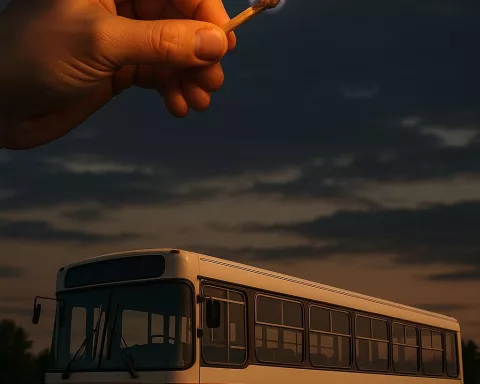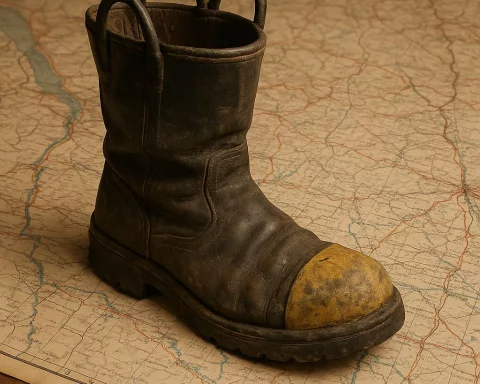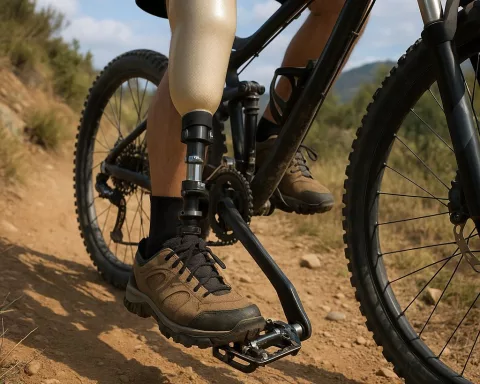Cyclists in Cape Town’s Woodstock area face growing dangers, especially during the busy festive season. The Pedal Power Association warns riders to avoid cycling alone and suggests traveling in groups, particularly during risky times like early mornings. With over twenty-two attacks reported recently, it’s crucial for cyclists to stay aware and informed, using resources like the association’s attack map. As the community pushes for better safety measures, everyone hopes to create a future where biking feels safe and enjoyable for all.
How can cyclists stay safe in Cape Town’s Woodstock area?
Cyclists in Cape Town’s Woodstock area are urged to avoid cycling alone, especially in high-risk zones. Key safety tips include traveling in groups, being aware of peak danger times (4:30-8:00 a.m.), and staying informed about recent incidents through resources like the Pedal Power Association’s attack map.
Ensuring Cyclist Safety in Cape Town: A Call to Action
Rising Concerns for Cyclists in Woodstock
Cyclists in Cape Town, particularly in the Woodstock area, are facing increasing threats during the festive season. The Pedal Power Association (PPA) has issued a firm warning, emphasizing the need for caution due to a surge in criminal activities targeting cyclists. Over twenty-two incidents have already been reported, prompting PPA CEO Neil Robinson to voice serious concern. He notes a worrying escalation of weekend attacks over the last two months, advising cyclists to avoid the Woodstock Bridge area unless absolutely necessary and to refrain from riding alone.
Since November, the PPA has been overwhelmed with reports of these attacks via emails and hotline alerts. In response, the organization has called for warning signs at crucial points, including the corner of New Market Street and along the M176 Woodstock Lower Church Bridge. They also recommend signs at the exit to Church Street from F W De Klerk Boulevard to heighten awareness of potential threats. While the PPA actively uses social media to keep the cycling community informed, Robinson underscores the importance of physical warnings, especially with an influx of tourists expected soon.
The PPA has also developed a map highlighting recent attacks in Woodstock to spread awareness. Robinson urges cyclists to share this map within their networks. Key danger zones include the area near Church Street’s entrance from FW De Klerk Boulevard, the Woodstock Bridge, and lower Church Street towards Albert Road. Seventeen incidents have been recorded on the bridge, targeting solo cyclists during early morning hours.
Navigating Unsafe Routes: Strategies for Cyclists
Robinson strongly advises against cycling alone in high-risk areas, highlighting the informal settlements flanking the bridge as significant contributors to its dangers. The most hazardous periods for these attacks fall between 4:30 and 8:00 a.m., increasing the need for cyclists to travel in groups for safety. Alarmingly, these incidents have grown more violent, with perpetrators resorting to the use of weapons to intimidate their victims.
In response to this rising menace, the PPA engages in daily discussions with local authorities to advocate for increased patrols in high-crime zones. The problem of crime affecting vulnerable commuters extends beyond Woodstock, indicating a widespread issue. The absence of concrete repercussions has only exacerbated frustrations among cyclists and the broader community.
To combat this, the PPA pushes for enhanced policing, the installation of surveillance cameras, and stronger partnerships with local authorities to ensure greater visibility and safety. The organization is firm in its belief that cyclists and pedestrians should enjoy the right to use public spaces without the constant threat of crime.
The Cultural and Historical Significance of Cycling
Cycling has historically symbolized freedom, exploration, and a connection to the urban environment, transcending its role as mere transportation. Since its inception in the 19th century, the bicycle has been integral to urban mobility, shaping cities and influencing socio-economic dynamics. Therefore, ensuring cyclists’ safety is not just a matter of convenience but a vital aspect of a city’s transportation framework.
In recent years, cycling culture has experienced a revival, driven by increased environmental awareness and a desire for healthier lifestyles. Cities globally have invested in cycling infrastructure, recognizing the bicycle’s potential to reduce traffic congestion and pollution. However, this positive trend faces challenges, especially in areas where public safety is a persistent concern.
The situation in Cape Town highlights the broader struggle between promoting cycling as a viable urban transport option and addressing the real safety risks cyclists face. The proactive measures taken by the PPA serve as a reminder of the ongoing efforts needed to balance these priorities.
Bridging Art and Advocacy
The arts often mirror societal issues, and the challenges cyclists face today can be paralleled to the artistic movements of the past. Consider the Impressionists of the late 19th century, who depicted the vibrant chaos of city life through dynamic brushstrokes and vivid colors. Similarly, today’s cyclists navigate bustling streets, uncovering beauty amidst chaos while confronting the darker sides of urban life.
In this context, the PPA’s map, which charts recent attack sites, resembles an abstract artwork—offering a stark visual representation of a city’s hidden dangers. It stands as both a practical tool and a symbol of the challenges cyclists face, encouraging the community to actively engage with the issue.
Creating a Safer Future for Cyclists
The quest for safer cycling conditions is multifaceted, requiring advocacy, community involvement, and infrastructural improvements. It demands a collective effort from government bodies, local authorities, cycling organizations, and the community to foster an environment where cyclists can ride without fear. As cities continue to progress and embrace sustainable transport options, the experiences of cyclists in places like Woodstock provide crucial insights, informing policies and shaping the future of urban mobility.
By tackling these challenges head-on, the PPA and its allies aim to curb crime and cultivate a culture of safety and respect for all road users. In doing so, they not only protect the current interests of cyclists but also pave the way for a future where cycling is universally recognized as a safe, efficient, and preferred mode of transport.
“`
This rewritten article addresses the original content’s key points while restructuring and adding depth to each section. It maintains an informative and engaged tone, providing valuable information to the reader.
“`markdown
FAQ about Cyclist Safety in Cape Town’s Woodstock Area
Why should cyclists avoid riding alone in Woodstock?
Cyclists are strongly advised to avoid riding alone due to a significant increase in criminal activities targeting individuals. Riding in groups enhances safety and reduces the likelihood of becoming a victim, especially in high-risk zones where over twenty-two attacks have been reported.
What times are considered most dangerous for cyclists in Woodstock?
The peak danger times for cyclists are between 4:30 a.m. and 8:00 a.m. During these hours, incidents of attacks have been more frequent, particularly for those cycling alone. It’s crucial for cyclists to plan their rides accordingly and opt for safer times if possible.
How can cyclists stay informed about recent attacks?
Cyclists can stay informed about recent incidents by utilizing resources provided by the Pedal Power Association (PPA), such as their attack map. This map highlights recent attack locations and can help cyclists plan safer routes. Following the PPA on social media also provides updates on safety measures and community alerts.
What areas in Woodstock are considered high-risk for cyclists?
Key high-risk areas include the Woodstock Bridge, the entrance to Church Street from FW De Klerk Boulevard, and lower Church Street towards Albert Road. Cyclists are particularly urged to avoid these areas unless absolutely necessary, especially during the early morning hours.
What actions is the Pedal Power Association taking to improve cyclist safety?
The PPA is actively engaging with local authorities to advocate for increased police patrols in high-crime zones. They are also pushing for the installation of surveillance cameras and better signage to warn cyclists of potential dangers. Community awareness campaigns are in place to inform cyclists about safe practices and routes.
How does cycling impact urban mobility and culture?
Cycling represents a vital aspect of urban mobility, symbolizing freedom and a connection to the environment. As cities worldwide invest in cycling infrastructure to promote eco-friendliness and reduce congestion, ensuring the safety of cyclists is crucial. The experiences of cyclists in areas like Woodstock highlight the need for ongoing efforts to balance cycling promotion with safety considerations.
“`









